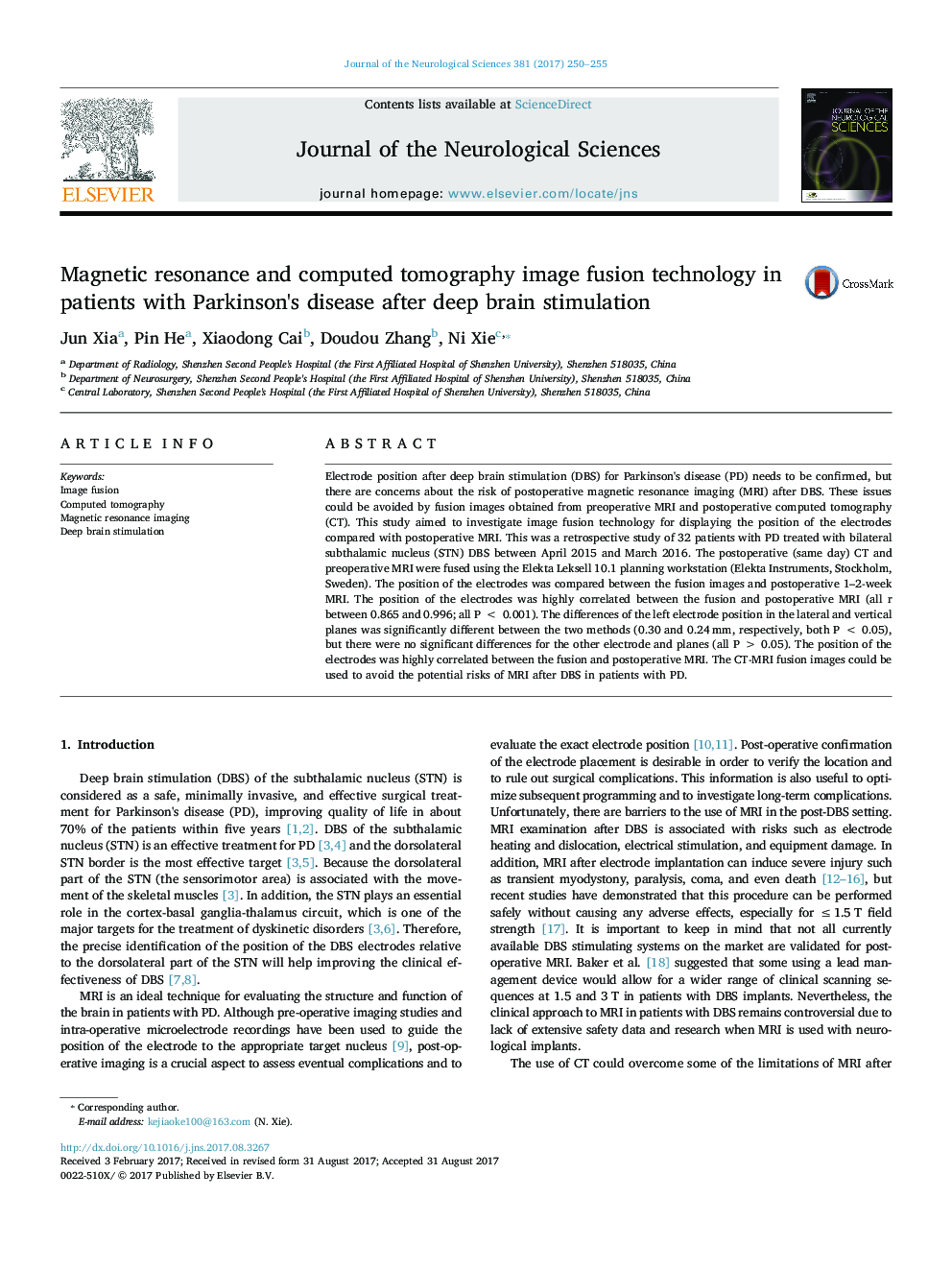| Article ID | Journal | Published Year | Pages | File Type |
|---|---|---|---|---|
| 5502523 | Journal of the Neurological Sciences | 2017 | 6 Pages |
Abstract
Electrode position after deep brain stimulation (DBS) for Parkinson's disease (PD) needs to be confirmed, but there are concerns about the risk of postoperative magnetic resonance imaging (MRI) after DBS. These issues could be avoided by fusion images obtained from preoperative MRI and postoperative computed tomography (CT). This study aimed to investigate image fusion technology for displaying the position of the electrodes compared with postoperative MRI. This was a retrospective study of 32 patients with PD treated with bilateral subthalamic nucleus (STN) DBS between April 2015 and March 2016. The postoperative (same day) CT and preoperative MRI were fused using the Elekta Leksell 10.1 planning workstation (Elekta Instruments, Stockholm, Sweden). The position of the electrodes was compared between the fusion images and postoperative 1-2-week MRI. The position of the electrodes was highly correlated between the fusion and postoperative MRI (all r between 0.865 and 0.996; all PÂ <Â 0.001). The differences of the left electrode position in the lateral and vertical planes was significantly different between the two methods (0.30 and 0.24Â mm, respectively, both PÂ <Â 0.05), but there were no significant differences for the other electrode and planes (all PÂ >Â 0.05). The position of the electrodes was highly correlated between the fusion and postoperative MRI. The CT-MRI fusion images could be used to avoid the potential risks of MRI after DBS in patients with PD.
Related Topics
Life Sciences
Biochemistry, Genetics and Molecular Biology
Ageing
Authors
Jun Xia, Pin He, Xiaodong Cai, Doudou Zhang, Ni Xie,
